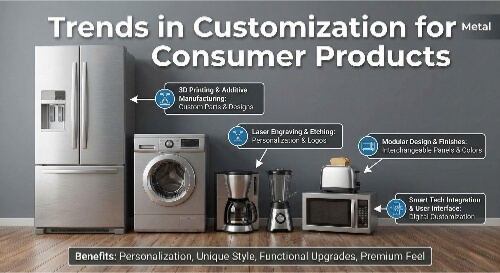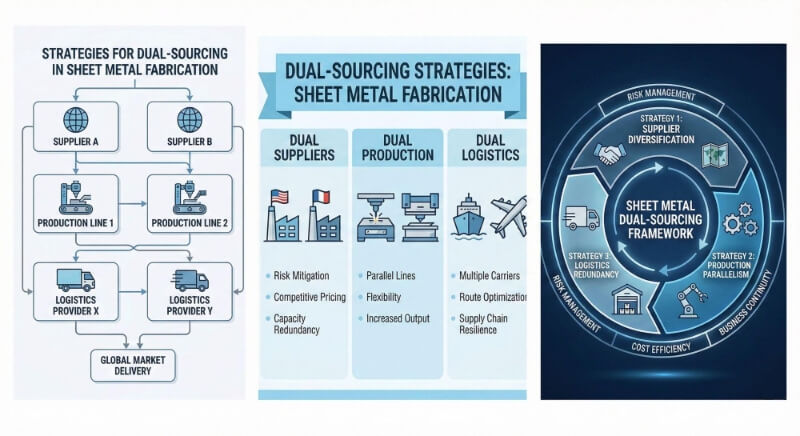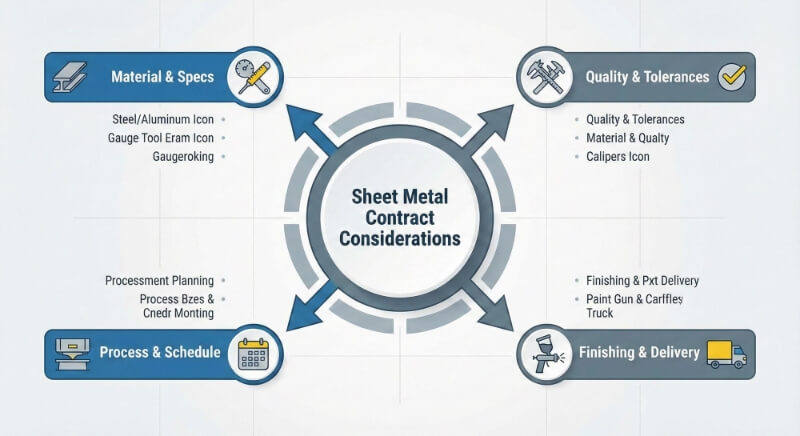많은 제조업체와 엔지니어는 부품을 결합하는 새로운 방법을 필요로 합니다. 용접이나 나사와 같은 기존 방식은 무게 증가나 재료 손상과 같은 문제를 일으킬 수 있습니다. 접착 본딩은 서로 다른 부품을 연결하는 방식을 바꾸고 있습니다. 더 깨끗하고 빠르며 유연한 방법을 제공함으로써 이러한 문제를 해결할 수 있습니다.
접착 본딩은 엔지니어와 제품 제조업체에게 새로운 옵션을 제공합니다. 이 방법은 무게를 줄이고 외관을 개선하며 단단한 재료를 연결하는 데 도움이 될 수 있습니다. 접착 본딩이 프로젝트에 어떻게 도움이 되는지 계속 읽어보세요.
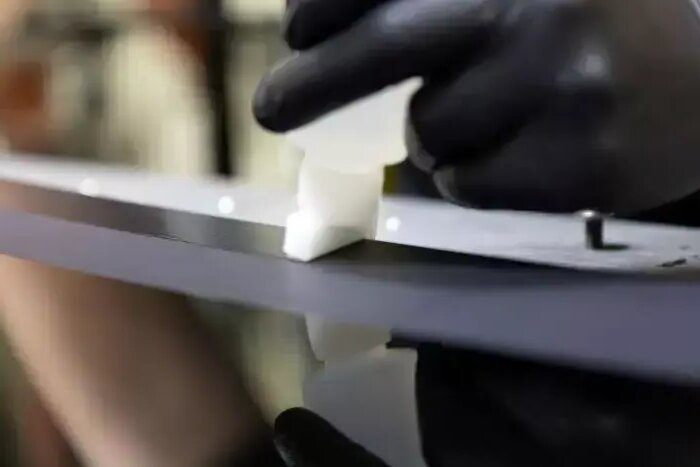
접착 본딩이란 무엇인가요?
접착 본딩은 일반적으로 액체 또는 페이스트와 같은 재료를 사용하여 두 표면을 서로 붙이는 결합 프로세스입니다. 이 물질을 접착제라고 합니다. 접착제는 부품 사이에 퍼진 다음 굳어져 강력한 연결을 형성합니다.
이 방법은 부품의 모양을 변경하지 않습니다. 얇은 소재나 열이나 압력을 견딜 수 없는 소재에 적합합니다. 본드는 표면 전체에 응력을 고르게 분산시켜 강도와 외관을 개선할 수 있습니다.
접착 본딩의 기본 원리
접착 본딩이 작동하는 이유를 이해하려면 접착제가 표면에 어떻게 달라붙는지 살펴보는 것이 도움이 됩니다. 재료와 접착 방법에 따라 몇 가지 다른 방식으로 접착이 일어날 수 있습니다.
기계적 접착력
기계적 접착은 접착제가 표면의 작은 구멍이나 거친 부분으로 흘러 들어갈 때 발생합니다. 접착제가 굳으면서 자물쇠의 열쇠처럼 그 작은 공간에 고정됩니다.
이는 거칠거나 다공성인 표면을 접착할 때 흔히 사용됩니다. 접착제가 틈새를 잘 메울수록 접착력이 강해집니다. 샌딩이나 그릿 블라스팅과 같은 표면 처리는 이 효과를 개선하는 데 도움이 될 수 있습니다.
화학적 접착력
화학적 접착은 접착제가 표면과 반응할 때 형성됩니다. 이 반응은 결합 지점에서 새로운 화학 결합을 생성합니다.
이는 접착제와 재료가 화학적으로 호환될 때 가장 효과적입니다. 일부 접착제는 금속, 플라스틱 또는 유리와 같은 특정 재료와 일치하도록 설계되었습니다.
이 유형의 접착력은 매우 강합니다. 강도가 가장 중요한 구조물 접착에 자주 사용됩니다.
확산 접착력
확산 접착은 접착제와 표면의 분자가 서로 이동할 때 발생합니다. 서로 닿는 지점에서 약간 혼합됩니다.
이는 일반적으로 플라스틱 또는 이와 유사한 재료에서 작동하며, 표면과 접착제 모두 분자가 움직일 수 있을 만큼 부드러워야 합니다.
재료가 섞이면서 결합력은 더욱 강해집니다. 시간이 지남에 따라 연결은 두 개의 개별 부품이 아닌 하나의 부품처럼 됩니다.
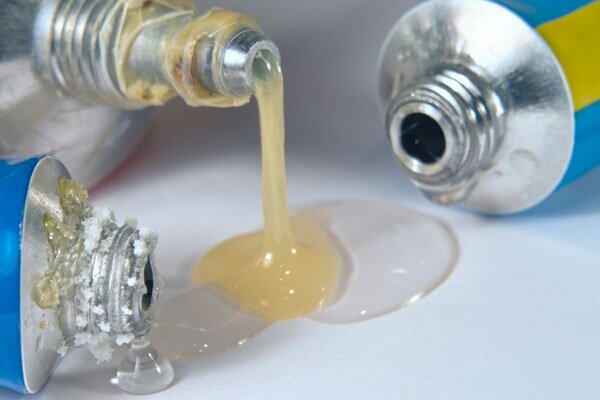
단계별 접착 본딩 프로세스
접착제를 제대로 붙이려면 각 단계를 주의 깊게 따라야 합니다. 하나라도 놓치면 접착이 실패할 수 있습니다. 제대로 접착하는 방법은 다음과 같습니다.
1단계: 표면 준비
접착 표면은 깨끗하고 준비된 상태여야 합니다. 먼지, 기름, 녹 또는 습기가 있으면 접착력이 약해질 수 있습니다. 솔벤트나 비누와 물로 청소하는 것으로 시작하세요.
그립감을 높이려면 다음을 사용하여 표면을 거칠게 처리하세요. 샌딩, 블라스팅 또는 화학적 처리. 이렇게 하면 표면적을 넓혀 접착제가 더 단단히 붙도록 도와줍니다.
2단계: 접착제 선택
작업에 적합한 접착제를 선택하세요. 접착하는 재료, 접합부의 강도, 열, 추위, 습기 등의 환경을 고려하세요.
플라스틱에 가장 잘 붙는 접착제가 있는 반면 금속이나 유리용으로 만들어진 접착제도 있습니다. 완전히 사용하기 전에 항상 제품 데이터 시트를 확인하거나 간단한 테스트를 해보세요.
3단계: 접착제 도포
접착제를 표면 전체에 골고루 바릅니다. 필요한 종류와 양에 따라 브러시, 롤러, 스퀴즈 보틀, 스프레이 또는 디스펜서를 사용할 수 있습니다.
접착제가 너무 많으면 넘칠 수 있습니다. 너무 적으면 틈이 생길 수 있습니다. 접착 부위를 완전히 덮을 수 있도록 얇고 균일한 층을 만들도록 하세요.
4단계: 서피스 결합
접착제가 아직 사용할 수 있을 때 두 부품을 함께 결합합니다. 조심스럽게 정렬합니다. 정렬이 잘못되면 접착의 강도와 모양에 영향을 줄 수 있습니다.
가볍게 눌러 부품을 제자리에 고정합니다. 이렇게 하면 접착제가 퍼지고 갇힌 공기가 제거됩니다.
5단계: 경화
경화란 접착제가 굳어져 결합을 형성하는 것을 말합니다. 접착제의 종류와 온도에 따라 몇 분에서 몇 시간이 걸릴 수 있습니다.
일부 접착제는 실온에서 경화됩니다. 다른 접착제는 열, 빛 또는 습기가 필요합니다. 이 시간 동안 부품을 움직이지 마십시오. 그렇지 않으면 접합부가 약해질 수 있습니다.
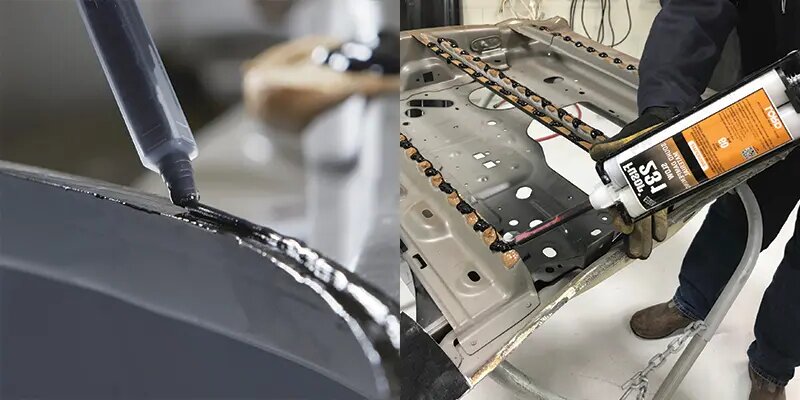
접착 본딩의 장점
접착 본딩은 다른 결합 방법과는 비교할 수 없는 이점을 제공합니다. 특히 혼합 재료로 만든 최신 제품에서 기능과 디자인을 모두 지원합니다.
고른 스트레스 분산
접착제는 응력을 몇 군데가 아닌 넓은 영역에 분산시킵니다. 이렇게 하면 약한 부분을 줄이고 균열이 생기는 것을 방지할 수 있습니다. 하중이 더 고르게 분산되어 장기적인 강도와 내구성을 향상시킬 수 있습니다.
경량 소재 접합
많은 접착제가 볼트, 나사 또는 용접. 이는 자동차나 항공 우주와 같이 무게를 줄이는 것이 중요한 산업에서 유용합니다. 또한 접착제를 사용하면 무게를 추가하거나 구멍을 뚫지 않고도 얇은 재료를 결합할 수 있습니다.
디자인 유연성 및 심미성
접착제를 사용하면 더 매끄럽고 깔끔한 디자인이 가능합니다. 구멍이 필요 없습니다, 패스너또는 용접 자국이 없습니다. 따라서 이음새가 보이지 않는 매끄러운 제품을 만들 수 있습니다. 또한 곡면, 불규칙하거나 접근하기 어려운 표면을 더 쉽게 접착할 수 있습니다.
한계와 과제
접착식 본딩은 많은 이점을 제공하지만 완벽하지는 않습니다. 몇 가지 제한 사항으로 인해 애플리케이션에 적합한 방법인지 여부에 영향을 미칠 수 있습니다.
하중 지지 용량
접착제는 용접이나 기계식 패스너처럼 높은 하중을 견디지 못할 수 있습니다. 과부하가 걸리거나 부적절하게 지지할 경우 접착식 조인트는 고강도 사용 시 실패할 수 있습니다. 안전을 위해 많은 디자인에서 리벳이나 볼트와 함께 접착식 본딩을 사용합니다.
환경 저항
일부 접착제는 열, 추위 또는 습기에 잘 견디지 못합니다. 햇빛, 화학물질 또는 날씨에 노출되면 접착력이 떨어질 수 있습니다. 특수 접착제는 열악한 환경을 위해 만들어졌지만 접착하는 동안 비용이 더 많이 들거나 추가 단계가 필요할 수 있습니다.
장기적인 내구성 및 노화
시간이 지나면 접착제가 마르거나 줄어들거나 강도가 떨어질 수 있습니다. 열과 자외선은 이 속도를 높입니다. 장기간 사용하는 접착 부품은 정기적인 검사가 필요합니다. 올바른 접착제를 사용하고 올바르게 경화시키면 노화 저항성을 개선하는 데 도움이 됩니다.
결합 강도에 영향을 미치는 요인
강력한 접착력은 많은 작은 디테일에 달려 있습니다. 공정의 어느 한 부분이라도 잘못되면 접착이 예상보다 빨리 실패할 수 있습니다.
표면 거칠기
표면의 질감이 중요한 역할을 합니다. 표면이 약간 거칠면 접착제가 잘 붙는 데 도움이 됩니다. 너무 매끈하면 접착제가 잘 붙지 않을 수 있습니다. 너무 거칠면 고르게 퍼지지 않을 수 있습니다. 가볍게 샌딩하거나 블라스팅하면 가장 좋은 결과를 얻을 수 있습니다.
신청 방법
접착제를 바르는 방법이 중요합니다. 코팅이 고르지 않거나 공기가 갇혀 있거나 접착제가 너무 많으면 접착력이 약해질 수 있습니다. 브러시, 노즐, 롤러 등 올바른 도구를 사용하면 매끄럽고 일관된 레이어를 유지하는 데 도움이 됩니다.
환경 조건
온도와 습도는 접착제가 경화되는 방식에 영향을 미칩니다. 너무 춥거나 너무 습하면 경화 속도가 느려지거나 아예 멈출 수 있습니다. 항상 접착제의 권장 작업 조건을 따르세요. 접착이 시작되기도 전에 문제가 발생하지 않도록 재료를 적절히 보관하세요.
재료 호환성
모든 접착제가 모든 소재에 잘 붙는 것은 아닙니다. 일부 플라스틱, 고무 또는 금속에는 특수 표면 처리 또는 프라이머가 필요합니다. 접착제의 기술 데이터를 확인하여 해당 재료에 적합한지 확인하세요. 간단한 테스트를 수행하면 나중에 시간과 비용을 절약할 수 있습니다.
접착 본딩과 다른 결합 방법의 비교
다음은 접착식 본딩과 용접 및 기계식 패스너를 나란히 비교한 것입니다:
| 특징 | 접착 본딩 | 용접 | 기계식 패스너 |
|---|---|---|---|
| 필요한 열 | 아니요 | 예 | 아니요 |
| 무게 영향 | 낮음(경량) | 보통에서 높음 | 추가 무게 추가 |
| 표면 손상 | 없음 | 예(재료를 녹이거나 태움) | 예(구멍 또는 변형) |
| 모습 | 깨끗하고 매끄러운 마무리 | 눈에 보이는 솔기 | 보이는 헤드 또는 나사 |
| 스트레스 분산 | 보세 구역 내에서도 | 용접 부위에 집중 | 패스너 지점에 집중 |
| 재료 호환성 | 서로 다른 재료를 쉽게 접착 | 유사한 금속으로 제한되는 경우가 많습니다. | 대부분의 자료에서 작동 |
| 장비 비용 | 낮음에서 보통 | 높음(특수 도구, 교육) | 낮음에서 보통 |
| 재작업 또는 분해 | 깨끗하게 분해하기 어려움 | 매우 어려움 | 손쉬운 분해 |
| 적용 속도 | 보통(경화 시간 필요) | 숙련된 작업자를 위한 빠른 속도 | 빠르고 간편한 |
| 모범 사용 사례 | 얇고, 혼합되거나, 섬세한 재료 | 고강도 금속 조인트 | 탈착식 또는 조정 가능한 부품 |
산업별 사용 사례
접착 본딩은 산업 전반에 걸쳐 널리 사용됩니다. 강도 및 무게 절감부터 외관 및 안전에 이르기까지 다양한 요구 사항을 충족하는 데 도움이 됩니다.
자동차 및 항공우주
자동차와 비행기에서 접착제는 강도를 포기하지 않고 무게를 줄이는 데 도움이 됩니다. 부품이 가벼워지면 연비가 향상됩니다. 또한 접착제는 금속과 플라스틱 또는 탄소 섬유와 같은 이종 재료를 접착합니다. 접착제는 소음과 진동을 줄여 승차감과 성능을 향상시킵니다.
전자제품 및 소비재
접착제는 부피를 늘리지 않고 휴대폰, 태블릿, 가전제품의 부품을 고정합니다. 먼지와 습기를 차단하는 데 도움이 됩니다. 또한 외부에 나사나 클립이 보이지 않아 세련된 디자인이 가능합니다.
의료 기기 및 포장
의료 도구에서 접착제는 금속 패스너의 필요성을 줄여 제품을 더 가볍고 안전하게 만듭니다. 포장의 경우 접착제는 식품, 의약품, 개인 위생용품을 빠르고 깨끗하게 밀봉하는 데 도움이 됩니다. 또한 변조 방지 및 쉽게 열 수 있는 디자인도 지원합니다.
결론
접착 본딩은 접착제와 유사한 물질을 사용하여 열이나 패스너 없이 부품을 결합하는 공정입니다. 표면 그립, 화학 반응 또는 분자 혼합을 통해 강력한 연결을 형성하는 방식으로 작동합니다. 이 방법은 깨끗하고 다양한 재료를 지원하며 접합부 전체에 응력을 고르게 분산시키는 데 도움이 됩니다.
프로젝트에 적합한 본딩 방법을 선택하는 데 도움이 필요하신가요? 도면 또는 부품 세부 정보를 보내주세요.-빠르고 안정적인 솔루션을 찾을 수 있도록 도와드립니다.
안녕하세요, 저는 케빈 리입니다

지난 10년 동안 저는 다양한 형태의 판금 제작에 몰두해 왔으며 다양한 워크숍에서 얻은 경험에서 얻은 멋진 통찰력을 이곳에서 공유했습니다.
연락하세요

케빈 리
저는 레이저 절단, 굽힘, 용접 및 표면 처리 기술을 전문으로 하는 판금 제조 분야에서 10년 이상의 전문 경험을 갖고 있습니다. Shengen의 기술 이사로서 저는 복잡한 제조 문제를 해결하고 각 프로젝트에서 혁신과 품질을 주도하는 데 최선을 다하고 있습니다.

